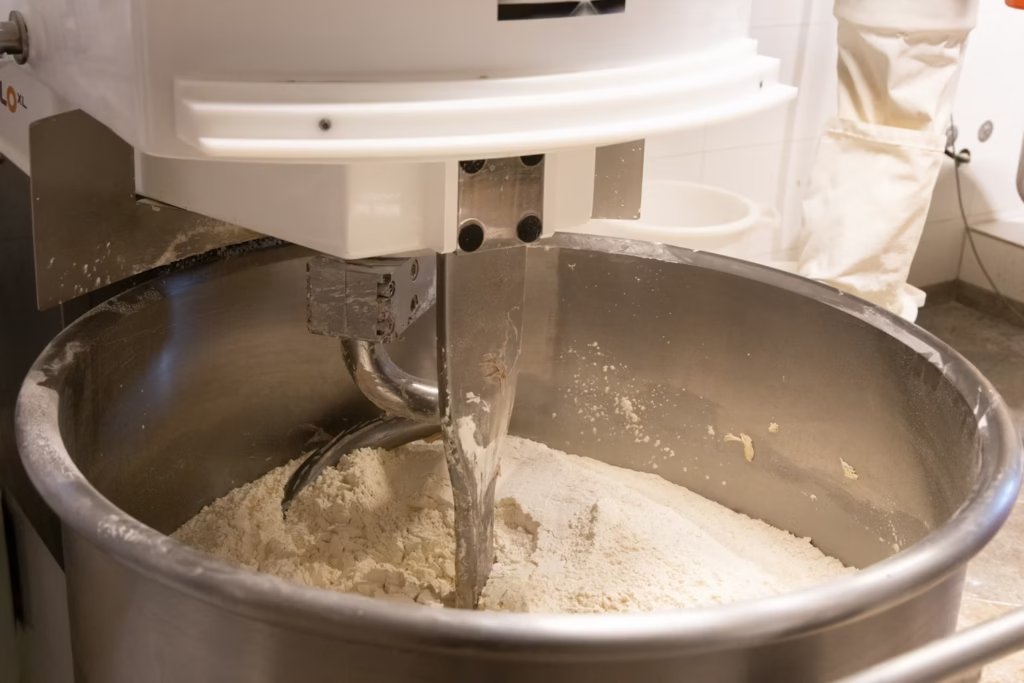In today’s modern kitchen, there are several appliances designed to make cooking and food preparation faster, easier, and more efficient. Among the most commonly used are mixers, blenders, and food processors. While they may seem similar and often have overlapping functions, each of these appliances serves a unique purpose. Understanding the difference between a mixer, blender, and food processor will help you choose the right tool for the task—and avoid unnecessary clutter on your kitchen counter.
1. What is a Mixer?
A mixer is an appliance used primarily for combining ingredients into a uniform mixture. It is most commonly used in baking but is also useful for preparing batters, whipping cream, and kneading dough.
Types of Mixers:
- Hand Mixer: A lightweight, handheld device with detachable beaters. It is great for whipping eggs, mixing cake batter, or combining cream and sugar.
- Stand Mixer: A larger, stationary appliance that has a mixing bowl and different attachments like dough hooks and whisks. It is ideal for heavy-duty mixing, kneading bread dough, or preparing large batches of batter.
What It Does Best:
- Whipping cream or egg whites
- Mixing cake or pancake batters
- Kneading dough for bread or pizza
- Preparing cookie or brownie mixtures
What It Can’t Do:
- Blend liquids smoothly
- Chop vegetables or process solid foods
2. What is a Blender?
A blender is designed for pureeing, liquifying, or emulsifying food and liquids. It consists of a tall jar with a rotating blade at the bottom and is great for making smoothies, soups, sauces, and shakes.
Types of Blenders:
- Countertop Blender: The standard blender used for drinks, soups, and sauces. It has a tall jug and is capable of crushing ice and blending fruits.
- Immersion Blender (Hand Blender): A handheld device that can be submerged directly into pots or bowls for blending soups or sauces.
What It Does Best:
- Making smoothies or milkshakes
- Pureeing soups and baby food
- Blending sauces, dips, or salad dressings
- Crushing ice or frozen fruits
What It Can’t Do:
- Mix heavy dough or dry ingredients
- Chop or shred solid foods like vegetables or cheese
3. What is a Food Processor
A food processor is a versatile kitchen appliance designed for chopping, slicing, grating, and mixing a variety of foods. It features multiple blades and discs that can handle a wide range of tasks from chopping vegetables to kneading dough.
Main Features:
- Large work bowl
- Multiple interchangeable blades and discs
- Wide feeding chute for whole fruits and vegetables
What It Does Best:
- Chopping onions, herbs, or vegetables
- Shredding cheese or grating carrots
- Slicing fruits and vegetables uniformly
- Mixing dough or pastry crust
- Making nut butters or grinding meats
What It Can’t Do:
- Blend liquids into a smooth texture (like smoothies)
- Whip light ingredients like cream or egg whites as efficiently as a mixer
Quick Comparison Table
| Feature | Mixer | Blender | Food Processor |
|---|---|---|---|
| Best For | Baking and mixing | Liquids and purees | Chopping and slicing |
| Handles Dough? | Yes (stand mixer) | No | Yes |
| Blends Liquids? | No | Yes | Limited |
| Chops/Slices? | No | No | Yes |
| Common Uses | Cake batter, whipping cream | Smoothies, soups | Chopping, grating, shredding |
| Attachments | Beaters, whisks, dough hooks | Jars, lids | Slicing discs, blades |
Which One Should You Choose?
If you’re wondering which appliance is right for you, the answer depends on your cooking habits:
- For bakers: A stand mixer is essential for mixing batters and kneading dough.
- For smoothie lovers: A blender is ideal for making drinks and liquid-based recipes.
- For meal preppers and cooks: A food processor is perfect for chopping, slicing, and reducing prep time.
Some people may even benefit from owning all three, as each has unique strengths that support different kitchen tasks.
Conclusion
Mixers, blenders, and food processors are not interchangeable, even though they may look similar or share some features. Each one is built for specific types of tasks, and using the right appliance can improve your efficiency, the quality of your food, and your overall kitchen experience. Whether you’re baking a cake, preparing a smoothie, or slicing vegetables for a salad, knowing which tool to use will save you both time and effort.

